This article is written by Sakshi Kuthari. It discusses in detail Article 44 of the Indian Constitution, its historical background, significance, and the constitutional provisions relating to Article 44. The advantages and challenges involved in implementing the Uniform Civil Code are also enshrined along with the landmark judgements.
Table of Contents
Introduction
The Constitution of India comprises 395 Articles (after 106 Constitutional Amendments done in the Constitution there are now 448 Articles in number) each with its own importance and distinct role in serving the Indian population. The Indian Constitution grants fundamental rights and outlines various procedures that the authorities must follow. Among them, Article 44 stands out as the only provision that remains entirely theoretical, without any practical application to date. Article 44 provides for a Uniform Civil Code applicable to all Indian citizens, aiming for uniformity across the nation.
This Article was inserted to standardise laws relating to personal matters such as inheritance, marriage, divorce, and adoption in order to create consistent standards amidst India’s diverse culture. Despite Article 44 being part of the Indian Constitution for several decades, the Uniform Civil Code has not yet been implemented. The importance of Article 44 is discussed in this article, which explores in detail how its execution could positively impact equality and reduce religious bias and discrimination.
What is Article 44 of the Indian Constitution
Part IV of Article 44 of the Indian Constitution mandates that the State endeavour to establish a Uniform Civil Code for all citizens across the country. Article 44 aims to protect the rights and practices of different sections of the population. The Uniform Civil Code seeks to create a single, consistent set of laws governing personal matters such as marriage, divorce, inheritance, and property for all individuals, regardless of their religious beliefs or community affiliations. It represents an effort taken by the State to harmonise the diverse personal laws that currently exist among India’s various religious communities, including Hindus, Muslims, Christians, and others. The Uniform Civil Code acknowledges India’s rich diversity in religion and culture and highlights the nation’s commitment as a secular state to ensure equality and justice for all its citizens. The State faces various challenges because of various different personal laws that apply to different religious groups. These differing laws can lead to inconsistencies in legal rights, particularly in family-related matters.
History of Uniform Civil Code
The concept of a Uniform Civil Code dates back to the Colonial period, beginning with the principle of ‘lex-loci’, which translates to ‘law of the land’. In 1840, a report known as the Lex-Loci Report emphasised the need for a unified code of Indian laws relating to contracts, marriage, crimes, and evidence. However, the report also suggested that the personal laws of Hindus and Muslims should be excluded from this codification. The Report of 1840 and the Queen’s Proclamation of 1859 reinforced this stance by stating that religious matters would not be codified, and that personal laws should continue to be governed by religious and community-specific rules. During this time, criminal laws were codified for the entire country. In 1828, Lord William Bentick, the first Governor General of India, intervened in Hindu religious practices. On December 4, 1829, he issued Regulation XVII, declaring the practice of sati illegal and punishable by the courts. Additionally, female infanticide was made illegal. Later, Lord Dalhousie and Ishwar Chandra Vidyasagar passed the Hindu Widow Remarriage Act, 1856.
A number of secular laws were introduced after independence that took precedence over various personal laws and received broad acceptance from the majority of the population. These included the Special Marriage Act, 1954; the Dowry Prohibition Act, 1961; the Medical Termination of Pregnancy Act, 1971; the Juvenile Justice (Care and Protection of Children) Act, 2000; and the Prohibition of Child Marriage Act, 2006. However, these laws did not form a comprehensive civil code and addressed only a limited range of civil issues.
Making of Article 44 of the Constitution
On 23 November, 1948, the Constituent Assembly of India had an engaging debate regarding the draft of Article 44, which provided for the Uniform Civil Code. During the discussion and subsequent voting, both the supporters and opponents of the provision presented detailed arguments. It was evident that many Muslim members appeared deeply apprehensive, which likely contributed to the fact that those opposing the provision were predominantly from Muslim backgrounds. They contended that a Uniform Civil Code would infringe the freedom of religion, potentially disrupting the harmony within the Muslim community, and that it would interfere with the personal laws.
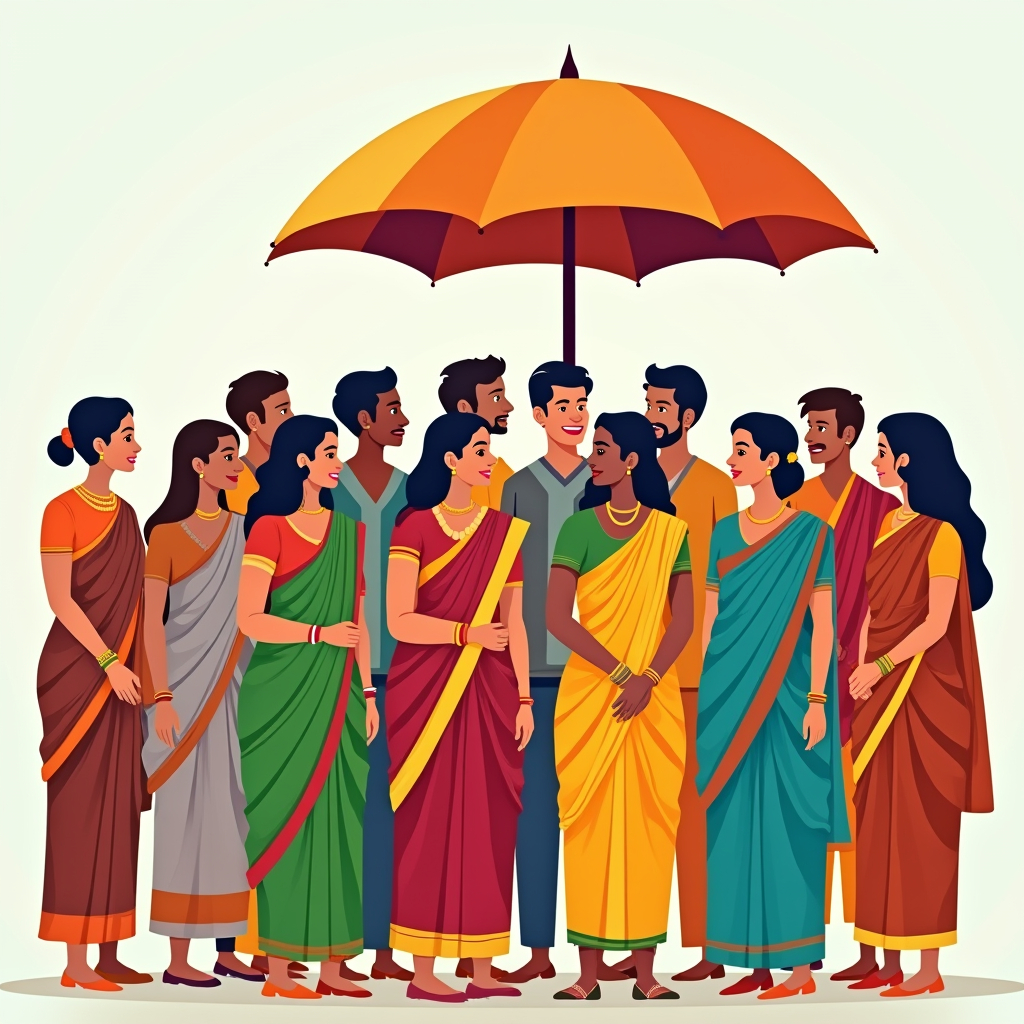
It was argued by the supporters of the provision that a Uniform Civil Code was important because it would maintain national unity and uphold the secular values of the Constitution. It was contended by one of the members of the Drafting Committee that this provision would impact not only the Muslim community but also the Hindu community. It was also further emphasised that securing the rights of women would not be possible without a Uniform Civil Code.
At the conclusion of the debate, it was clarified that the Uniform Civil Code was not an entirely new concept; India already had a common civil code. The proposed code would merely extend its coverage to marriage and inheritance, areas that were left unaddressed. Despite the heated debate, the Draft Article was adopted on the same day, without any amendment.
Significance and implementation of the Uniform Civil Code
India’s rich cultural diversity encompasses individuals from various backgrounds, each with distinct beliefs and practices. Achieving consistency amidst this diversity is crucial, and implementing the Uniform Civil Code can play a key role in this process. By creating a consistent legal framework for all citizens, the Uniform Civil Code strengthens the concept of secularism enshrined under the ambit of the Indian Constitution and contributes to national unity. Currently, many constituencies are fragmented along religious and community lines, leading to vote-bank politics based on religion. The introduction of a Uniform Civil Code could reduce such religious-based political practices.
The Uniform Civil Code was introduced in the year 1950; its actual implementation would represent a major advancement in India’s progress, helping to overcome religious and other obstacles to nation-building. It is essential for both Indian citizens and lawmakers to recognise that fully implementing Article 44 will promote secularism in the country. The aim of a Uniform Civil Code is not to interfere with or prohibit religious practices but to establish a consistent set of laws applicable to all citizens, ensuring equal treatment irrespective of an individual’s religion. Additionally, the Uniform Civil Code could enhance the efficiency and effectiveness of the judicial system, particularly in resolving disputes relating to religious matters.
At present, personal laws often include provisions that undermine women’s rights or create gender inequalities. For example, practices such as the Muslim tradition of Parda, the marriage of girls below the age of 15 years according to the Mohammedan law, and inequalities in succession rights disadvantage women. The enforcement of the Uniform Civil Code would address these disparities, providing women with equal status and rights in society, particularly in communities with stringent practices.
Constitutional provisions relating to Article 44
The Constitution (Forty-second Amendment) Act, 1976, introduced an important term, “secularism.” The Indian cultural diversity and various religious practices existing in India make it essential to grant people the freedom to practise and propagate any religion of their choice. However, the Indian Constitution also provides for ‘equality before law’. In a country where freedoms of speech and expression, as well as religious practice are guaranteed, the existence of separate laws and rules for different religions raises the question of the Uniform Civil Code. The Uniform Civil Code includes several key provisions of Part III of the Indian Constitution, which are as follows:
No discrimination on the grounds of religion, etc.
Under Article 15 of the Indian Constitution, the State is prohibited from discriminating against any citizen of India solely on the basis of religion, race, caste, sex, place of birth, or any of these factors. In family-related matters, India has a system of personal laws, i.e., Hindu law for the Hindus, Muslim law for the Muslims and so on. For the Hindus, Section 5(i) of the Hindu Marriage Act, 1955, provides a law for monogamous marriage, but Muslim personal laws allow Muslim men to marry any number of wives. This was upheld solely in relation to the charge of discrimination based on ‘religion’. In the case of Srinivasa Aiyar vs. Saraswathi Ammal (1952), the Hon’ble Madras High Court pointed out that the Hindus have been enjoying for a long time their own indigenous system based on Hindu scriptures in the same way as Mohammedans were subject to their own personal laws.

Section 10 of the Divorce Act, 1869 states that a Christian husband can get divorce from his wife on the grounds of adultery committed by his wife. On the other hand, a Christian wife to get divorce from her husband has to prove not only the adultery of her husband but also something more, such as incest, bigamy, rape, cruelty, or dissertion. In the case of Mrs. Pragati Varghese And Etc. vs. Cyril George Varghese And Etc. (1997), the Hon’ble Bombay High Court held that Section 10 is discriminatory in nature on the ground of sex and is, thus, violative of Article 15(1). Further, a Christian woman cannot seek divorce on the grounds of cruelty and desertion, while women under Hindu law can seek divorce under Section 13(1)(ia) of the Hindu Marriage Act, 1955 (on the ground of cruelty) and Section 13(1)(ib) of the Hindu Marriage Act, 1955 (on the ground of desertion). This discrimination is based merely on the ground of religion, and this is violative of Articles 14 and 15 of the Constitution of India.
In the case of Danial Latifi vs. Union of India (2001), the validity of the Muslim Women (Protection of Rights and Divorce Act), 1986, was challenged on the ground that the Act, when compared with Section 125 of the Code of Criminal Procedure, 1973, is discriminatory against Muslim divorced women. However, the Hon’ble Supreme Court rejected this contention. The Hon’ble Supreme Court held that the purpose of both laws is the same, i.e., to address situations where a divorced woman is likely to be led into destitution and vagrancy. The Mohammedan law codifies and regulates under Section 3(1)(a) of the Muslim Women Protection of Rights and Divorce Act, 1986 provisions relating to maintenance. It provides that in addition to entitlement of mahr and maintenance to the Muslim wife during the Iddat period, the husband is also under an obligation to make a ‘reasonable and fair provision’. ‘Reasonable and fair provision’ means the needs of the divorced woman, the means of the husband, and the standard of living the woman enjoyed during her married life. Personal laws are established based on various religious practices and rituals, resulting in different sets of rules and regulations for people of different religions, even though they are all part of India.
Both Article 15 and 44 of the Constitution are inclined towards promoting gender equality. Article 15 aims to eliminate discriminatory practices based on personal attributes and Article 44 addresses the potential inequalities arising from the coexistence of diverse personal laws. The aim of the implementation of Uniform Civil Code is to unify these diverse regulations into a single set of laws, ensuring that all the citizens follow the same rules while respecting their right to practise their religion. It will also complement the equality and non-discrimination principles outlined in Article 15 by ensuring that personal laws do not lead to unequal treatment of individuals based on their religion or community.
Freedom to practise or profess religion
Article 25 safeguards individuals’ religious beliefs but does not protect practices that may be in conflict with public order, health, or morality. Article 25(1) of the Indian Constitution guarantees to every person, and not just the citizens of India, the ‘freedom of conscience’ and ‘the right freely to profess, practice, and propagate religion’. This right is subject to public order, health, morality, and other provisions relating to the fundamental rights.
Under Article 25(2)(a) of the Indian Constitution, it is provided that the state is not restricted from making any law regulating or restricting any economic, financial, political, or other secular activity that may be associated with religious practice. Under Article 25(2)(b), the state is not prevented from making any law providing for social welfare and reform or for opening Hindu religious institutions of a public character to all classes and sections of the Hindus.
Thus, it can be noted that the rights guaranteed to individuals and religious denominations under Article 25 are not absolute. They are subjected to maintenance of public order, etc. The religious rights of individuals and religious denominations under Article 25 are not absolute. It is subject to maintenance of public order, health, and morality.
India, as a secular country, still has different personal laws for various communities regarding civil matters, which contradicts the equality principles enshrined under Article 14. Implementing the Uniform Civil Code would promote equality by applying a uniform set of civil laws to all citizens, regardless of their religion, ensuring that everyone is treated equally before the law. The relationship between Articles 25 and 44 involves reconciling the need for a common legal framework with respect to the diverse religious practices.
Freedom to manage religious affairs

Article 26 of the Indian Constitution grants special protection to the religious denominations. In this article, the term ‘religious denomination’ means a religious sect having a common faith and organisation and designated by a distinctive name. Article 26 provides that every religious denomination thereof has the right to:
- establish and maintain institutions for religious and charitable purposes;
- govern its own religious affairs;
- own and acquire movable and immovable property; and
- administer such property in accordance with the law.
This right is subject to public order, morality, and health.
Article 25 guarantees particular rights to all persons, and Article 26 is confined to religious denominations or any section thereof. Article 26 thus guarantees collective freedom of religion.
To form a religious denomination, three conditions have to be fulfilled:
- It is a collection of individuals who have a system of beliefs that they regard as useful for their well-being;
- They have a common organisation; and
- Collection of these individuals constitutes a distinctive name.
Article 26 grants religious denominations the right to manage their own religious affairs and institutions.
Article 44 aims to standardise personal laws through a Uniform Civil Code. By implementing a Uniform Civil Code, the various different religious practices existing in different religions will be resolved by putting in order the personal laws of different religions following the principles of equality.
Advantages and challenges in implementing the Uniform Civil Code
Advantages of implementing the Uniform Civil Code
Some of the advantages of implementing a Uniform Civil Code in India:
- National unity will be strengthened by bringing all the Indian population, regardless of their caste, religion, or tribe, under a single Uniform Civil Code. It contribute to national unity by ensuring that all citizens of India are treated equally, replacing diverse personal laws, etc.;
- It helps to minimise the influence of vote bank politics that various political parties practise during elections. A Uniform Civil Code would standardise laws, reducing the scope for any type of targeted promise made by politicians and making it harder for politicians to use personal law-based appeal to gain votes;
- Article 15(3) of the Indian Constitution allows the state to make special laws for women because, till today, personal laws are still mostly misused due to patriarchal societal norms and improper legislation. The freedom to practise and profess any religion under Article 25 cannot justify in any way the infringement of basic human rights of women. Many personal laws relating to marriage, divorce, succession, and inheritance among various communities remain unjust and discriminatory towards women. The existence of these sexist laws has led to the incorrect treatment of women by a male-dominated society. By enforcing a Uniform Civil Code, the condition of Indian women will be enhanced, their rights will be protected, and the elimination of discriminatory personal laws will take place. This will in turn promote gender equality and advance the goal of equal rights for women throughout the territory of India.
- The Preamble of the Indian Constitution declares India to be a secular nation. The implementation of a Uniform Civil Code across India ensures that all Indian citizens, regardless of whether they follow Hinduism, Islam, Christianity, or Buddhism, are governed by the same set of civil laws. It also helped to eliminate religious discrimination and align with the core principles of secularism. It is important to note that the Uniform Civil Code would not infringe on individuals’ freedom to practise their religion but help to eliminate discrimination on the basis of religion and bring together all citizens under a single civil legal framework;
- The fundamental right to practise any religion permits each religion to independently manage its own personal matters. However, this religion-based classification contradicts the right to equality guaranteed by Article 14 of the Indian Constitution. Implementing a Uniform Civil Code would promote equality by applying a consistent set of civil laws to all citizens, irrespective of their religion, thereby ensuring equal treatment before the law;
- The various personal laws of different communities are undermining India by creating inequalities. These varying and often conflicting personal laws contribute to inequalities. Introducing a Uniform Civil Code would address these conflicts and inconsistencies, promote national integration within India, and support the concept of “One Nation, One Flag, and One Law”;
- The personal laws of any religion are the traditional regulations governed by religious practices, with many existing laws that originated centuries ago and hold an orthodox character. Many of these laws are outdated and are not in consonance with contemporary society. Implementing a Uniform Civil Code would address the issues related to these outdated laws by either eliminating or restricting them, modernising our civil law system.
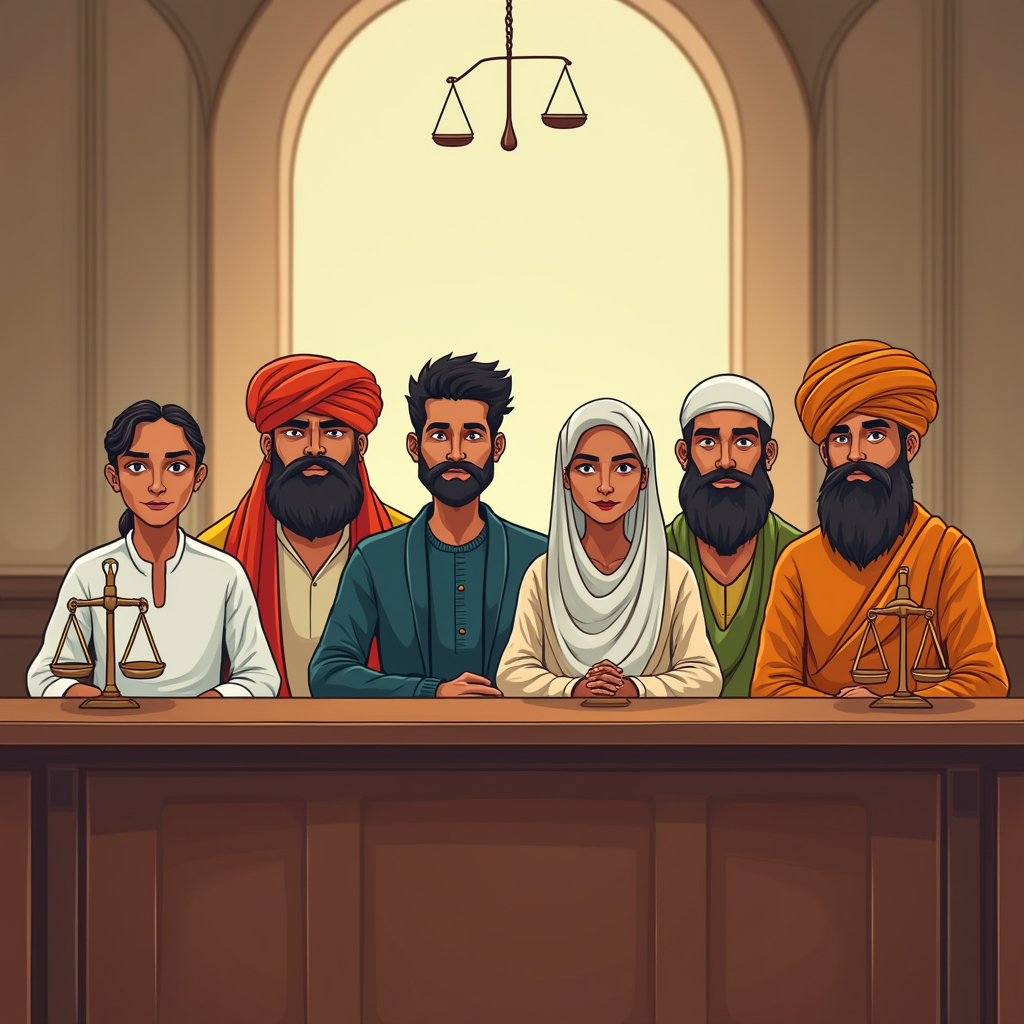
Challenges in implementing the Uniform Civil Code
Article 44 of the Indian Constitution is still not implemented due to various challenges, which are as follows:
- India’s diversity encompasses a wide range of religions, cultures, and traditions, which presents a significant challenge in implementing a Uniform Civil Code. The challenge lies in balancing this variety while providing a consistent legal framework. Thus, it is challenging for the beliefs and sentiments of every section of society when establishing a standard law that brings together all these diverse groups;
- Many people in India lack understanding about the Uniform Civil Code and often fear that its implementation would infringe their religious sentiments and restrict religious practices. The primary goal of the Uniform Civil Code is to promote equality by ensuring that all Indian citizens are treated equally within society;
- A key challenge for the central authorities is to reassure every religious group and community that the implementation of the Uniform Civil Code will be conducted in good faith and with a bona fide intention, without imposing the will of the majority on the minorities;
- The diverse range of religions in India often leads to the politicisation of this issue, complicating efforts to implement the necessary changes. This results in several obstacles in the process of enacting the Uniform Civil Code;
- By implementing a Uniform Civil Code for all the communities and religions, it could result in facing opposition from certain political parties, undoubtedly limiting the smooth development and enforcement of the Uniform Civil Code;
- The implementation of a Uniform Civil Code in India will necessitate amendments to various constitutional provisions. This process will require substantial political consensus and effort, which can be difficult to obtain;
- Creating a comprehensive Uniform Civil Code that addresses personal laws related to marriage, divorce, inheritance, and other matters while ensuring fairness and equality is a legally complex task;
- One of the key goals of the Uniform Civil Code is to promote gender equality. However, this objective may face resistance due to entrenched traditional and patriarchal norms in different communities;
- Even if the Uniform Civil Code is enacted, ensuring its effective enforcement and implementation, especially in remote and culturally conservative areas, can be a challenging and lengthy process;
- As India is a signatory to various human rights conventions, ensuring that the implementation of the Uniform Civil Code aligns with these international obligations adds another layer of complexity;
- There may also be an increase in legal disputes as personal laws would be standardised. Given the existing significant backlog of cases in India, this could aggravate the situation.
Is there a need of Uniform Civil Code
The need for implementing a Uniform Civil Code is rooted in the principles of the Preamble of the Indian Constitution, which provides for ensuring to the people of India equality, liberty, fraternity, and secularism. The different religious practices done by people of different religious communities bring disparities and discrimination, particularly against women. The Uniform Civil Code will eliminate all kinds of disparities prevalent in different personal laws and ensure equality for all citizens. It will also help India fulfil its international obligations regarding human rights and gender equality. The Parliament of India made an attempt to bring into effect the Uniform Civil Code in India by introducing a Bill in the year 2019.
Uniform Civil Code Bill, 2019
The Uniform Civil Code Bill, 2019 was introduced in the Lok Sabha on 25 October, 2019. The Bill seeks to create and establish the National Inspection and Investigation Committee for the preparation as well as implementation of the Uniform Civil Code throughout India. Section 4 of the Bill provides for the National Inspection and Investigation Committee. The Committee will be responsible for taking any measures necessary for the codification and implementation of the Uniform Civil Code throughout the Indian territory. The Committee shall ensure the following:
- The Uniform Civil Code Bill, 2019 is intended to apply throughout India;
- The Bill uniformly governs laws related to marriage, divorce, succession, adoption, guardianship, and the partition of land and assets for all citizens, without discrimination;
- It aims to uphold the right to equality guaranteed under Article 14 and prohibits discrimination based on religion, caste, or gender, as outlined in Article 15 of the Indian Constitution; and
- Additionally, the Bill seeks to replace existing personal laws, which are based on religious texts and traditions, with the Uniform Civil Code.
Advantages of the Uniform Civil Code Bill, 2019
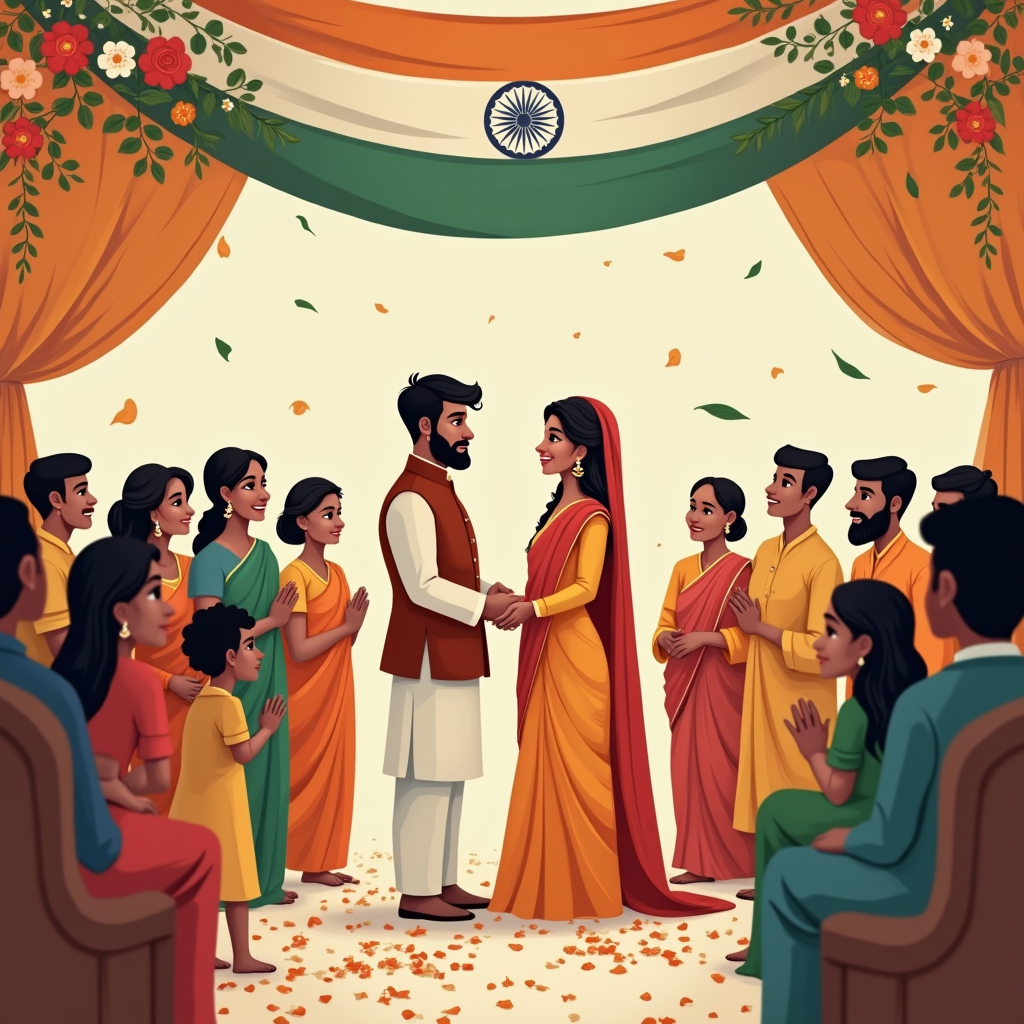
- The Bill ensures that all citizens are governed by the same legal framework, i.e., promoting equality and fairness;
- The Bill contains a single set of laws. This would simplify legal process, thereby reducing complexity and confusion that arises due to multiple personal laws practices;
- The Bill bridges the gap between different communities, bringing a sense of national identity and unity;
- The Bill tries to bring into effect gender equality.
Disadvantages of the Uniform Civil Code Bill, 2019
- Resistance from communities with deep-rooted personal laws and traditions might not readily follow the provisions of the said Bill;
- The complexities involved in harmonising personal laws is challenging because it would require significant legal and administrative changes. It might lead to legal ambiguities;
- The Bill does not fully accommodate the diverse needs and practices of all communities;
- The Bill could become a politically charged issue, leading to polarised debates.
Portuguese Civil Code, 1867
The Uniform Civil Code in the state of Goa is based on the Portuguese Civil Code, 1867. In Goa, Hindus, Muslims, and Christians are all subject to the same uniform laws regarding marriage, divorce, and succession. The Goa, Daman, and Diu Administration Act, 1962, enacted after Goa became a union territory in 1961 (now a state), authorised the application of Portuguese Civil Code, 1867, in Goa, with provision for amendments and repeals by the relevant legislative authority.
Features of the Portuguese Civil Code, 1867
The Uniform Civil Code of Goa has the following features:
- The Uniform Civil Code of Goa allows an equitable distribution of wealth and income between the spouses and their children, irrespective of their gender;
- It is mandatory to register the birth, marriages, and deaths of each and every individual. It also prescribes various provisions relating to divorce;
- The Indian Muslims whose marriages are registered are under a restriction to practise polgamy and triple talaq;
- All the assets acquired by either of the spouses at the time of marriage are considered joint property. Upon divorce, each spouse is entitled to receive half of the property. In the event of death, the surviving spouse inherits half of the deceased’s property;
- The parents cannot be completely disqualified to inherit from their property. There exists a law in favour of the children to inherit at least half of their parent’s estate, with the inherited property being divided equally among them.
Defects of the Portuguese Civil Code, 1867
There exist under the Goa Uniform Civil Code certain limitations. They are as follows:
- Catholics in Goa are provided with specific privileges, i.e., exemption from registering the marriage and the authority of Catholic priests to dissolve marriage. The Catholic couples can solemnise their marriage in church by obtaining a ‘No Objection Certificate (NOC)’ from the Civil Registrar. In contrast, individuals of other religions in Goa must depend exclusively on civil registration as proof of their marriage. If a marriage between the Catholic couple is not consummated, a church tribunal can declare it null and void. However, non-Christians must seek a divorce through the courts and cannot use non-consummation of marriage as a basis for divorce;
- The Uniform Civil Code of Goa allows a specific form of polygamy for Hindus in Goa but does not extend the Shariat Act, 1937, to Muslims in Goa. Rather, Muslims are governed by both the Portuguese law and the Shastric Hindu law. The law does not allow bigamy or polygamy for any group, including Muslims, except that a Hindu man is permitted to remarry if his wife does not give birth to a child by the age of 21 years or a male child by the age of 30 years. Any divorce granted by ecclesiastical (Church) authorities is considered valid for civil purposes, whereas non-Catholics can obtain a divorce only through a civil court. It is necessary for the husband to formally divorce his wife to remarry. This in turn has led to Muslim men entering into secret relationships and deserting their dependent wives. If a woman considers her own religious law as the sole authority on marriage and divorce, she may consider herself isolated by the legal system, as her divorce will not be legally recognised and prevent her from remarrying;
- In the cases of divorce, a husband has a right to divorce his wife if she is caught having an affair. This right is, however, not granted to the wife. The wife has only a right to claim a separation due to her husband’s infidelity if it has caused a scandal in the public. A divorce can only be obtained by the wife if her husband brings his mistress into their home or when her husband abandons her. Christian Catholics who solemnise their marriage in the church are not subject to the civil divorce laws. Individuals belonging to the other religions can seek divorce for any reason, except for the Hindus, who can only obtain a divorce if their wife has committed adultery; and
- In cases involving property, both the husband and wife have joint ownership of assets, but the husband has to manage it. However, the husband still does not have the right to sell the house without his wife’s consent. It is made sure that the property is equally divided amongst the couple, but this applies only if each spouse’s family owns property. If the husband does not hold ownership rights in the property, the division of property during a divorce would result in the wife receiving half of nothing.
The Uniform Civil Code of Uttarakhand, 2024

The final draft of the Uniform Civil Code was approved by the Uttarakhand Cabinet on 4 February, 2024. On 6 February, 2024, in the State Assembly Uttarakhand, Chief Minister Pushkar Singh Dhami presented The Uniform Civil Code of Uttarakhand, 2024. It is explicitly stated that the provisions of this Code do not apply to the Scheduled Tribes as defined clause (25) of Article 366 of the Indian Constitution, nor to individuals or groups whose customary rights are protected under Part XXI of the Indian Constitution.
The Act is divided into four parts:
- The first part addresses laws related to marriage and divorce;
- The second part covers succession laws, which are further divided into intestate and testamentary succession;
- The third part pertains to live-in relationships; and
- The fourth part deals with provisions for repeals. The Act applies throughout Uttarakhand and also to residents living outside Uttarakhand.
Features of the Uniform Civil Code of Uttarakhand, 2024
Some of the important provisions of the Uniform Civil Code of Uttarakhand, 2024 are as follows:
- The Uniform Civil Code puts a complete ban on polygamy, nikah halala, iddat, triple talaq, and child marriage;
- It provides for establishing a uniform marriageable age for women and men across all religions. The minimum age for marriage of a woman is 18 years, and in the case of a man, the age of 21 years. In case of a breach of such condition, an imprisonment of 6 months is imposed and/or a fine of Rs. 25,000 is payable;
- The Code necessitates to register a marriage solemnised between the couple within 60 days of marriage, or a fine of Rs. 10,000 is payable in case of non-registration of marriage solemnised after the implementation of the Uniform Civil Code of Uttarakhand;
- In case of a dissolution of marriage taking place in contravention of the Uniform Civil Code rule, it is punishable with up to 3 years of imprisonment;
- It is necessary for live-in couples to register their relationship within one month. The Registrar has the authority to validate their relationship legally;
- The children born of a live-in relationship are to be considered legitimate;
- At the time of termination of a live-in relationship, it is necessary for the couple to bring this notice to the concerned officials;
- If the male live-in partner abandons the female live-in partner, the women can seek maintenance through the appropriate court;
- Both parties to the marriage have been given an equal right to dissolve their marriage through a decree of divorce, and a divorce can only be granted through the proceedings of the court;
- For succession laws, the Uniform Civil Code designates the primary heirs as the parents, children, and spouse;
- At the time of divorce or a domestic dispute between the couple, custody of the child up to the age of 5 years will always be awarded to the mother;
- Illegitimate children, adopted children, children born through surrogacy, and children conceived through assisted reproductive technology are all recognized as ‘biological children’.
Concerns relating to the Uniform Civil Code of Uttarakhand, 2024
The following are the limitations of the Uniform Civil Code of Uttarakhand, 2024:
- The Uniform Civil Code of Uttarakhand applies exclusively to the residents of the state who are identified as male or female and are in heterosexual relationships. It excludes mostly LGBTQ individuals from its ambit;
- The Code for its implementation depends on criminalisation, which is expected to disproportionately affect minority communities since it has outlawed various religious and customary practices of these groups;
- The surveillance measures outlined in the Code could potentially be misused to harass couples in interfaith and inter-caste relationships;
- The Domestic Violence Act, 2005 already provides protection to couples in live-in relationships, rendering the obligation to register live-in relationships redundant.
Landmark judgements relating to the Uniform Civil Code
Ms. Jordan Diengdeh vs. S.S. Chopra (1985)
Facts of the case
In the case, the petitioner, a member of the Khasi Tribe from Meghalaya, was raised as a Presbyterian Christian and was serving in the Indian Foreign Service. Her husband, a Sikh, married her under the Indian Christian Marriage Act, 1872. In 1980, the petitioner requested a declaration of nullity of the marriage or judicial separation under Sections 18, 19, and 22 of the Indian Divorce Act, 1869, citing her husband’s impotence as the reason. The Single Judge of the High Court refused to grant a declaration of nullity but issued a decree for judicial separation on the grounds of cruelty. Dissatisfied with the High Court’s decision, the petitioner submitted a special leave petition to the Hon’ble Supreme Court.
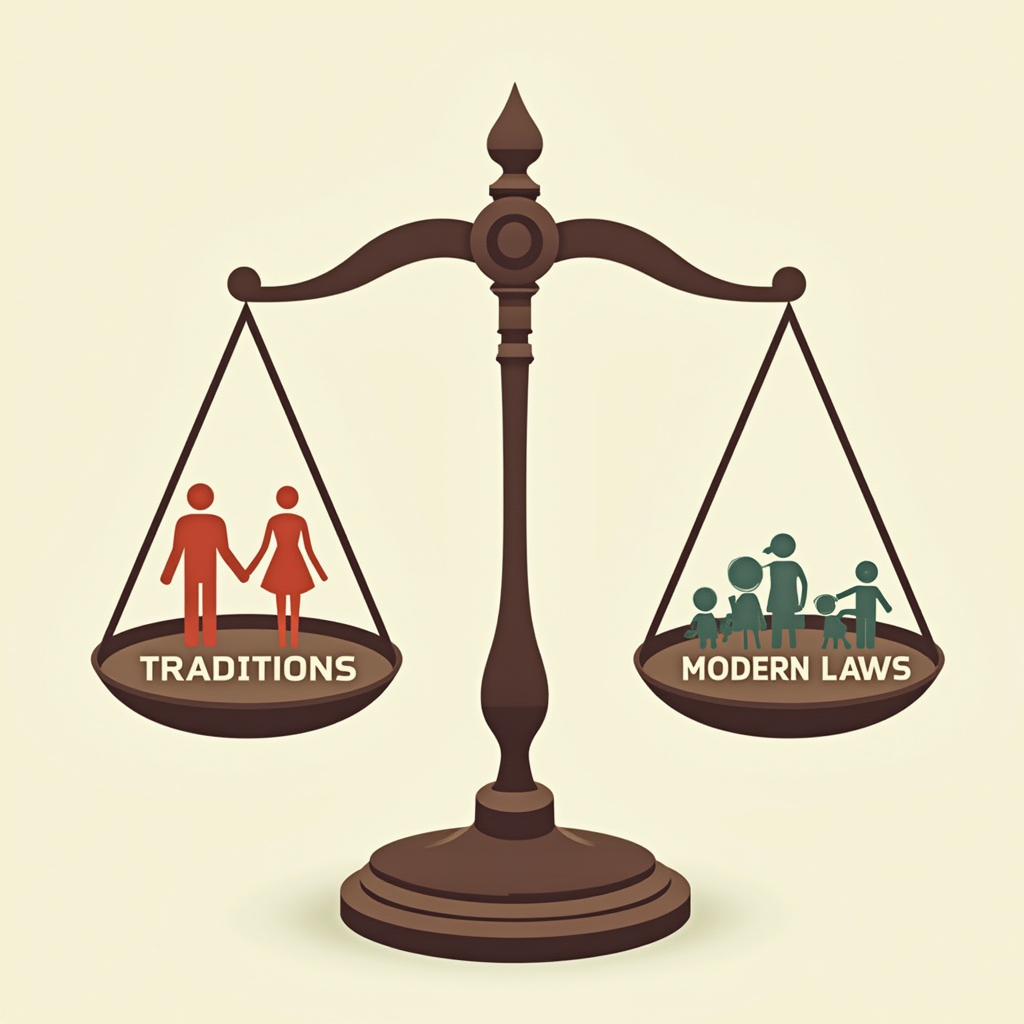
Issues raised
- There exists lack of consistency in divorce laws across different religious communities in India;
- Different religious communities had different grounds for divorce, resulting in disparity and potential injustice;
- Ms. Jordan Diengdeh appealed to the Hon’ble Supreme Court arguing that the Indian Christian Marriage Act, 1872 provided only limited grounds for divorce and did not provide the notion of irretrievable breakdown of marriage.
Judgement of the case
A Division Bench of the Hon’ble Supreme Court upheld the High Court’s decision on the following grounds:
- An examination of the relevant provisions of the Indian Christian Marriage Act, 1872, Hindu Marriage Act, 1955, Special Marriage Act, 1954, Parsi Marriage and Divorce Act, 1936, and Dissolution of Muslim Marriage Act, 1939 revealed significant disparities in the laws governing judicial separation, divorce, and annulment of marriage;
- Under Section 10 of the Hindu Marriage Act, 1955, a decree for judicial separation can be granted, and a decree for dissolution of marriage may be pursued if at least one year has passed since the judicial separation decree was filed. Provided there has been no resumption of cohabitation between the couple in the meantime. On the contrary, the Indian Divorce Act, 1869, does not have a similar provision. Therefore, an individual who obtains a decree for judicial separation under this Act must adhere to the decree and cannot later seek a divorce after any period of time; and
- In this case, the marriage appeared to have been irretrievably broken down. The Hon’ble Supreme Court was of the opinion that if the High Court’s findings were upheld, the couple would remain bound to each other, as neither mutual consent nor irretrievable breakdown of marriage is grounds for divorce under the Indian Divorce Act, 1869. Maintaining a marriage that is fundamentally and irreparably damaged serves no practical purpose;
The Hon’ble Supreme Court emphasised that it is crucial for the legislature to take action and establish a uniform code of marriage and divorce, as outlined under Article 44. There is an urgent need to enact laws that provide solutions for couples facing challenging situations.
Mohd. Ahmed Khan vs. Shah Bano Begum And Ors. (1985)
Facts of the case
In this case, Mohammad Ahmed Khan married Shah Bano in 1932 with a mahr amounting to Rs 3,000. They had three sons and two daughters. In 1978, Mohammad Ahmad Khan unilaterally divorced his 40-year-old wife by pronouncing ‘triple talaq’ (talaq-ul-biddat). According to Mohammedan law, he paid the agreed mahr during her iddat period. After Shah Bano was expelled from her matrimonial home in Madhya Pradesh; she filed a petition under Section 125 of the Code of Criminal Procedure, 1973, seeking maintenance. Initially, the Magistrate awarded her Rs. 25 per month. Dissatisfied with this decision, Shah Bano appealed to the Madhya Pradesh High Court in 1979, which increased the maintenance amount to Rs 179.20 per month.
In 1981, Shah Bano’s ex-husband challenged the High Court’s decision before the Hon’ble Supreme Court. He argued that under Mohammedan law, the husband’s obligation to maintain his wife after divorce extends only through the iddat period, thus superseding the provisions of Section 125 of the Code of Criminal Procedure, 1973.
Issues raised
- Is the provision relating to maintenance under Section 125 of the Code of Criminal Procedure, 1973, considered a secular provision?
- Does Muslim Personal Law include a requirement for the husband to provide financial support to his wife ‘upon divorce’?
- Is the law so rigid that the husband’s obligation to provide maintenance during the iddat period permanently relieves him of any further responsibility towards his ex-wife?
Judgement of the case
The Constitution Bench unanimously held that Section 125 of the Code of Criminal Procedure, 1973, is a religious neutral provision. It applies to individuals of all religions, including Hindu, Muslim, Christian, Parsi, Pagan, or Heathen. The provision is interpreted to apply universally, regardless of personal laws, and serves a social purpose. The primary aim of Section 125 is to protect dependents from ‘vagrancy’ and ‘destitution,’ and there is no reason to exclude Muslims from its application.
The court, in differentiating between Muslim personal law and Section 125 of the Code of Criminal Procedure, 1973, concluded that Muslim personal laws do not cover the situations addressed by Section 125. While Muslim personal law provides for the payment of mahr during the iddat period, it does not address cases where a divorced woman may struggle to support herself after the iddat period ends. By employing careful interpretative techniques, the court harmonised Muslim personal law with Section 125, asserting that in the event of any conflict, the Code of Criminal Procedure, 1973, would take precedence over Muslim personal law.
The Hon’ble Court rejected the argument that maintenance orders under Section 125 could be annulled under Section 127 simply because the husband had paid mahr at the time of the divorce. The court also held that mahr is not considered a payment specifically for divorce under Muslim personal law. Rather, mahr is an amount payable to a wife as part of the marriage consideration and should not be categorised as a payment for divorce. Thus, the fact that mahr was paid to the wife at the time of dissolution of marriage did not mean that it was a payment occasioned by the divorce. By defining mahr as a marriage payment rather than a divorce payment, the court emphasised that it did not prevent courts from awarding maintenance.
Danial Latifi & Anr vs. Union of India (2001)
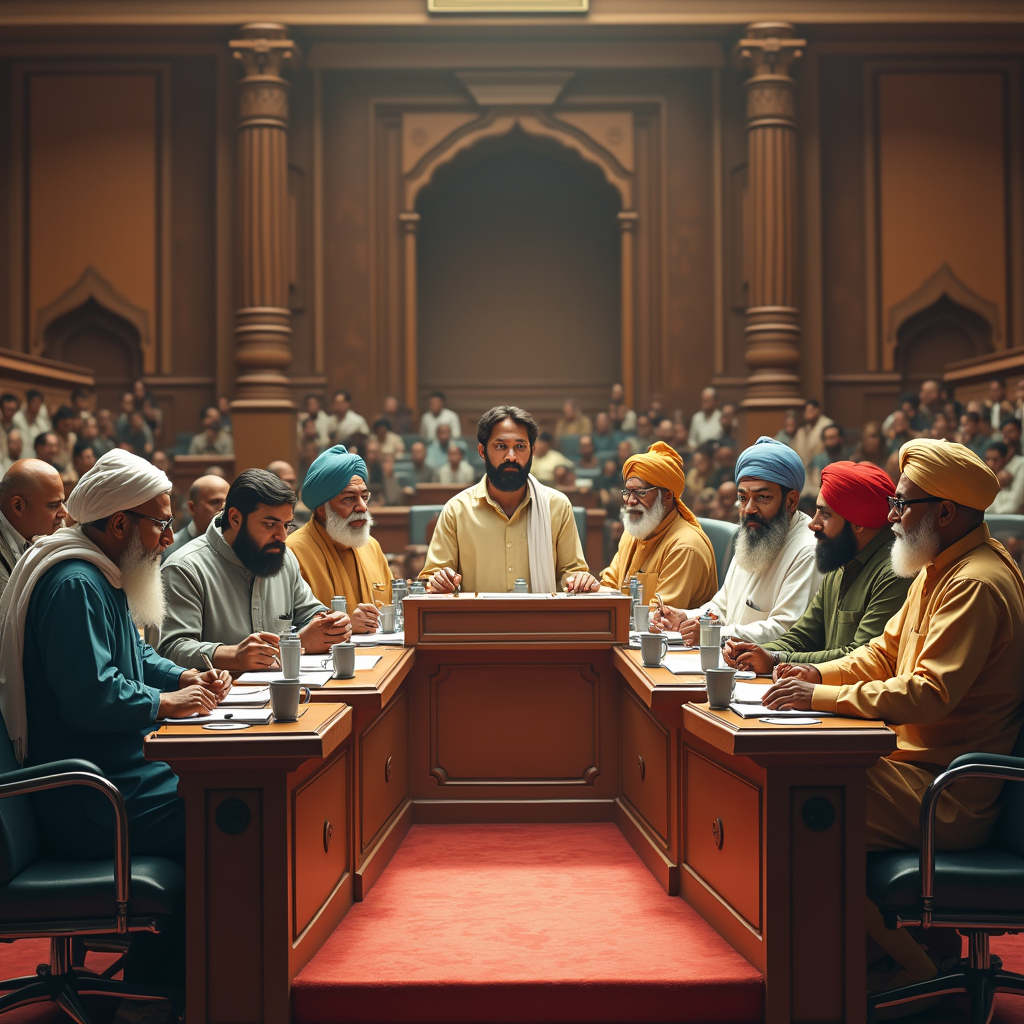
Facts of the case
In this case, Daniel Latifi filed a writ petition under Article 32 of the Indian Constitution, challenging the constitutional validity of the Muslim Women (Protection of Rights on Divorce) Act, 1986. The petitioner contended that the Act of 1986 was passed to be in derogation of certain constitutional provisions, as it failed to uphold the right to life for a wife who was financially dependent on her husband.
Issues raised
- Whether Section 3(1)(a) of the Muslim Women (Protection of Rights on Divorce) Act, 1986, is inconsistent with Articles 14, 15, and 21 of the Constitution of India?
- Whether the Muslim Women (Protection of Rights on Divorce) Act, 1986, is constitutionally valid?
Judgement of the case
The Hon’ble Supreme Court held the following:
- A Muslim husband is under an obligation to make reasonable and fair amounts of maintenance to his divorced wife for her future. According to Section 3(1)(a) of the Act, this provision must extend beyond the Iddat period and be made by the husband during the Iddat period;
- The liability of a Muslim husband to provide maintenance to the divorced Muslim wife under Section 3(1)(a) of the Act extends beyond the iddat period and is not limited to it;
- A divorced Muslim woman who has not remarried and cannot support herself after the Iddat period can request maintenance under Section 4 of the Act from her relatives. These relatives, including her children and parents, are obligated to support her in proportion to the inheritance they receive from her according to Muslim law. If any relative is unable to provide maintenance, the Magistrate may direct the State Wakf Board to provide the necessary support; and
- The Muslim Women (Protection of Rights on Divorce) Act, 1986, does not violate Articles 14, 15, and 21 of the Constitution of India.
Sarla Mudgal vs. Union of India (1995)
Facts of the case
In this case, Sarla Mudgal, the petitioner, was a Hindu woman whose husband had converted to Islam and subsequently married another woman without legally divorcing her. She argued that the second marriage of her husband was invalid and that he was committing bigamy under the Hindu Marriage Act, 1955.
Issues raised
- Can a Hindu husband, who was married under Hindu law, enter into a second marriage by converting to Islam?
- Whether such a marriage would be valid in relation to his first wife, who remains a Hindu, even if the first marriage has not been legally dissolved?
- Whether under Section 494 of the Indian Penal Code, 1860, the apostate husband would be deemed guilty for committing bigamy?
Judgement of the case
The Hon’ble Supreme Court ruled that a second marriage solemnised by a Hindu husband after converting to Islam without legally dissolving his first marriage would be deemed invalid. This second marriage would be considered void under Section 494 of the Indian Penal Code, 1860, and the husband would be guilty of an offence under that section.
Lily Thomas vs. Union of India (2000)
Facts of the case
In this case, a Hindu wife alleged that her husband had married a second wife after converting to another religion.
Issues raised
- Can a Hindu husband, after converting to Islam, contract a second marriage, and would such a marriage be considered invalid if the conversion was intended to evade a previous marriage?
- Would the husband be held liable for bigamy under Section 494 of the Indian Penal Code, 1860, for marrying again without legally dissolving the first marriage ?
- Whether implementing a Uniform Civil Code for all citizens is advisable and necessary to address such issues?
Judgement of the case
- It was determined that a second marriage by an individual with a living spouse is invalid and annulled under Section 11 of the Hindu Marriage Act, 1955. The court emphasised that the freedom guaranteed under Article 25 of the Indian Constitution should not infringe upon the rights of others. The court viewed conversions solely for the purpose of entering into a second marriage as unjustifiable, as such actions undermine the sanctity of marriage;
- The court stated that conversion to Islam to evade the prohibition of bigamy under Hindu law is inconsistent with religious principles. It was also affirmed that Section 494 of the Indian Penal Code applies if a Hindu spouse files a complaint against a partner who enters into a second marriage without legally dissolving the first marriage. The judgement confirmed that enforcing bigamy laws does not violate personal liberty under Article 21;
- The Hon’ble Supreme Court concluded that the husband’s conversion to Islam and subsequent second marriage were invalid. It was ruled that Sections 494 and 495 of the Indian Penal Code, 1860, along with Section 17 of the Hindu Marriage Act, 1955, are applicable in this case;
- Additionally, the court noted that religious conversions for the purposes of marriage do not nullify the obligations of the husband from the first marriage and that such actions are legally punishable. While acknowledging the potential benefits of a Uniform Civil Code, the court cautioned that immediate implementation could jeopardise national unity. It recommended that legal reforms be introduced gradually to address specific issues, respecting India’s diverse social fabric and promoting unity among different faiths.
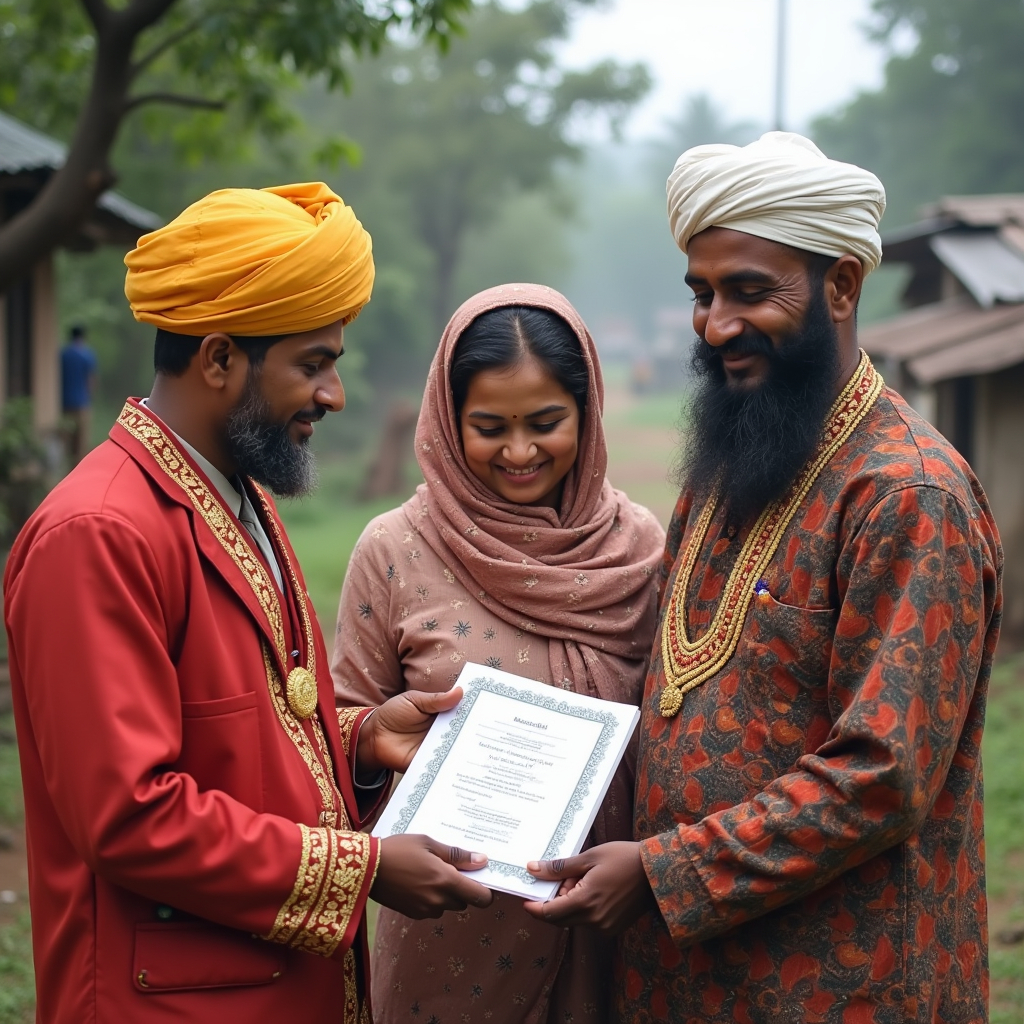
John Vallamattom & Anr. vs. Union of India (2003)
Facts of the case
In this case, a petition was filed challenging the legality of Section 118 of the Indian Succession Act, 1925, arguing that it imposes unreasonable restrictions on the ability to bequeath property for religious and charitable purposes. The petitioner claimed under Article 32 of the Indian Constitution that Section 118 of the Indian Succession Act, 1925, is unconstitutional and violative of Articles 14 and 15 of the Indian Constitution. They argued that this section imposes arbitrary and unjustifiable limitations on their right to donate personal property for religious or charitable purposes. Specifically, Section 118 restricts Christians with nieces, nephews, or other close relatives from making such donations unless a particular procedural process is followed.
Issues raised
- Whether Section 118 of the Indian Succession Act, 1925, violates Article 14 of the Indian Constitution?
- Whether Section 118 of the Indian Succession Act, 1925, led to discriminatory treatment of Christians in comparison to followers of other religions ?
Judgement of the case
The Hon’ble Supreme Court held that Section 118 of the Indian Succession Act was intended to prevent the improper or misguided transfer of personal property due to religious factors. However, such restrictions substantially limit an individual’s liberty to bequeath property according to their wishes, affecting its distribution after their death. The right to freely dispose of property is a fundamental aspect of ownership, and the Indian Succession Act, 1925, guarantees this right to everyone, irrespective of age, religion, caste, or creed. The court also noted that Section 118 specifically targets Indian Christians and found no justification for restricting a person’s liability to make testamentary dispositions for charitable purposes that serve the public good.
As charity is philanthropic activity rather than a religious one, limiting bequests for religious or charitable purposes was seen as a violation of Article 14 of the Indian Constitution. The court also opined that Article 15 pertains to individual rights, not group rights, making it irrelevant to this case. As a result, the Hon’ble Supreme Court unanimously declared Section 118 of the Indian Succession Act, 1925, unconstitutional for violating Articles 14 and 15.
Seema vs. Ashwani Kumar (2006)
Facts of the case
In this case, Seema, the petitioner, filed a case against Ashwani Kumar, the respondent, in the District Court in Haryana due to the ongoing differences and arguments between the couple. During the proceedings, the case was transferred to the Court of Additional District Judge in Delhi. An interim order was passed by the said court, and the proceedings of the case were put on halt. Subsequently, the case was transferred to the Hon’ble Supreme Court to address the wider issue that had arisen, i.e., the problem of unregistered marriages.
Issues raised
- Whether registration of marriages be made compulsory in India?
Judgement of the case
It was declared by the Hon’ble Supreme Court that all marriages, irrespective of the religion of the couple, must be compulsorily registered. This decision was prompted by the difficulties women face in asserting their rights within marriage, including claims for maintenance and child custody. The court found this ruling essential to address situations where deceitful husbands denied their marriages, leaving their spouses in challenging situations. The decision aims to support the goal of a common civil code, addressing many issues that arise from the lack of marriage registration. This decision of the court will have the following implications:
- Prevent child marriages and establish a minimum age for marriage;
- Ensure that all marriages are conducted with the full consent of both parties;
- Address and prohibit illegal bigamy and polygamy;
- Allow married women to claim their rights to live in the matrimonial home and receive maintenance;
- Enable widows to assert their inheritance rights and other entitlements following their husband’s death;
- Discourage abandonment of spouses by married men; and
- Prevent parents or guardians from selling daughters or young girls, including to foreigners, under the pretence of marriage.

Shayara Bano vs. Union of India (2017)
Facts of the case
In this case, Ms. Shayara Bano and Mr. Rizwan Ahmed, who married in April 2002 in Uttar Pradesh, were at the centre of a legal dispute. Ms. Bano alleged that her husband coerced her family into providing dowry and, after failing to secure additional dowry, Mr. Ahmed and his family abused and abandoned her while she was ill. In October 2015, Mr. Ahmed divorced Ms. Bano using talaq-ul-biddat, a form of instant triple talaq. Ms. Bano challenged the constitutionality of talaq-ul-biddat, polygamy, and nikah-halala by filing a writ petition with the Hon’ble Supreme Court in February 2016.
Issues raised
- Whether talaq-ul-biddat, including instantaneous triple talaq, is an essential practice of Islam?
- Whether instantaneous triple talaq infringes upon any fundamental rights guaranteed by the Indian Constitution?
- Whether triple talaq is protected under Article 25 of the Constitution?
- Whether the Muslim Personal Law (Shariat) Application Act, 1937, legally supports triple talaq?
Judgement of the case
The Hon’ble Supreme Court declared triple talaq unconstitutional. Justices Rohinton Nariman and UU Lalit found that talaq-ul-biddat, as governed by the Muslim Personal Law (Shariat) Application Act, 1937, was unconstitutional due to its arbitrary nature. Justice Kurian Joseph argued that triple talaq is consistent with the Holy Quran and lacks legal validity, stating, “What is considered bad in the Holy Quran cannot be good in Shariat, and what is bad in theology is also bad in law.” Both justices concluded that instantaneous triple talaq contradicts both theological principles and legal standards and cannot be justified solely by its prevalence.
Conversely, Chief Justice Khehar and Justice Abdul Nazeer dissented, arguing that the practice is an essential religious practice within Islam. They contended that because talaq-ul-biddat is widely accepted and sanctioned by religious authorities, it should be upheld as both constitutional and necessary.
The crux of the case was whether talaq-ul-biddat constitutes an essential religious practice under Article 25 of the Constitution, which prohibits state interference in essential religious practices. Chief Justice Khehar argued that, according to Article 25(1), this practice does not violate constitutional provisions, as Shariat or Muslim Personal Law is not legislatively mandated by the state.
Shabnam Hashmi vs. Union of India (2014)
Facts of the case
In this case, Shabnam Hashmi, a social activist and human rights advocate, faced challenges in being recognized as a parent of her adopted daughter due to Islamic law, which requires a biological relationship for parental status. She filed a writ petition under Article 32 of the Indian Constitution, arguing that Mohammedan law does not permit her to be considered a parent of the adopted child, while the Juvenile Justice Act, 2000, a secular law, allows adoption by individuals of any religion. She urged that Section 41 of the Juvenile Justice Act, 2000, and the Central Adoption Resource Authority (CARA) Guidelines be implemented and strictly adhered to by states and union territories.
Issues raised
- Whether the right to adopt a child is considered a fundamental right?
- In case of conflict between personal law and secular law, which law prevails?
- Whether caste, creed, or religion influence affects the process of adoption?
Judgement of the case
The Hon’ble Supreme Court affirmed that adoption is a fundamental right for all citizens, regardless of caste, creed, or religion. The court stated that under the Juvenile Justice Act, 2000, adoption is allowed irrespective of religion or caste. Although the petitioner did not provide extensive evidence, the court upheld her plea, recognising the right to adopt as falling within Part III of the Constitution, which guarantees fundamental rights. The court emphasised that every individual has an equal right to adopt a child, irrespective of their religion, caste, creed, or gender.
The court also noted that the Muslim personal laws do not acknowledge adoption, but this does not prevent childless couples from fulfilling a child’s emotional and material needs. Under the Juvenile Justice Act, 2000, adopted children are legally recognized as the children of their adoptive parents, not merely as guardians. This Act allows adoption even if personal laws do not address it. The Hon’ble Supreme Court declared that adoption under the Juvenile Justice Act, 2000, is permissible regardless of personal laws, which should no longer obstruct adoption based on religious beliefs.
Conclusion
The central issue is the timeline for the current government to implement the Uniform Civil Code, as envisioned by the framers of the Indian Constitution. Although traditional Hindu personal laws on inheritance, succession, and marriage were codified as early as 1955–56, the adoption of a uniform personal law has faced delays without clear legal or factual justification. Article 44 is based on the principle that religion and personal law should be separated in a modern society. While Article 25 guarantees religious freedom, Article 44 seeks to distinguish religion from matters of social relations and personal law. Secular issues like marriage and succession should not be governed by Articles 25 and 26. Hindu personal laws, similar to those of Muslims and Christians, have sacramental roots. Hindus, along with Sikhs, Buddhists, and Jains, have set aside their traditional practices for the sake of national unity and integration. However, other communities have not yet followed this example, despite the Constitution’s mandate for a “common civil code” for all of India.
Article 44 of the Constitution has largely remained unenforced, with minimal progress towards establishing a Uniform Civil Code. Implementing the Uniform Civil Code nationwide would promote national integration by eliminating conflicting legal systems based on different ideologies. It is the State’s responsibility to ensure a Uniform Civil Code for all citizens, and it has the legislative authority to achieve this. A meaningful effort must be made to realise the Constitution’s intent. While incremental judicial measures have addressed discrepancies between personal laws, they cannot replace a comprehensive common civil code. A Uniform Civil Code is a more effective and equitable approach to justice than dealing with issues on a case-by-case basis.
Frequently Asked Questions (FAQs)
What is a civil code?
A civil code is a comprehensive collection of laws that regulate private matters such as property rights, family relations, and contractual obligations.
Is Article 44 of the Indian Constitution justifiable?
No, Article 44 of the Indian Constitution is not justifiable. Article 37 of the Indian Constitution specifies that the Directive Principles of State Policy, including Article 44, are not enforceable in the court of law.
In which state was the Uniform Civil Code recently enacted?
On 7 February 2024, the state of Uttarakhand enacted the Uniform Civil Code.
Who introduced the concept of Uniform Civil Code into the Indian Constitution?
During the drafting of the Indian Constitution, leaders such as Jawaharlal Nehru and Dr. B.R. Ambedkar advocated for a Uniform Civil Code. It was included in the Directive Principles of State Policy due to opposition from religious groups and limited public awareness at that time.
References
- https://libertatem.in/articles/what-is-article-44-indian-constitution-uniform-civil-code/
- https://www.ijlsi.com/wp-content/uploads/A-Never-Ending-Tussle-between-Equality-and-Faith-Uniform-Civil-Code-V.-Article-25.pdf
- https://www.tscld.com/uniform-civil-code-a-critical-analysis
- https://politicsforindia.com/uniform-civil-code/
- https://www.indiatoday.in/law/story/goa-uniform-civil-code-marriage-polygamy-adoption-divorce-property-children-2400680-2023-07-02
- https://www.ijlsi.com/wp-content/uploads/A-Never-Ending-Tussle-between-Equality-and-Faith-Uniform-Civil-Code-V.-Article-25.pdf
Students of Lawsikho courses regularly produce writing assignments and work on practical exercises as a part of their coursework and develop themselves in real-life practical skills.
LawSikho has created a telegram group for exchanging legal knowledge, referrals, and various opportunities. You can click on this link and join:
Follow us on Instagram and subscribe to our YouTube channel for more amazing legal content.
 Serato DJ Crack 2025Serato DJ PRO Crack
Serato DJ Crack 2025Serato DJ PRO Crack


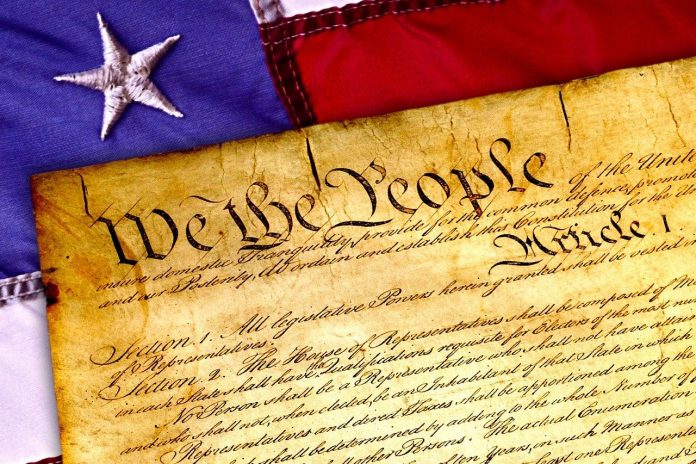







 Allow notifications
Allow notifications



